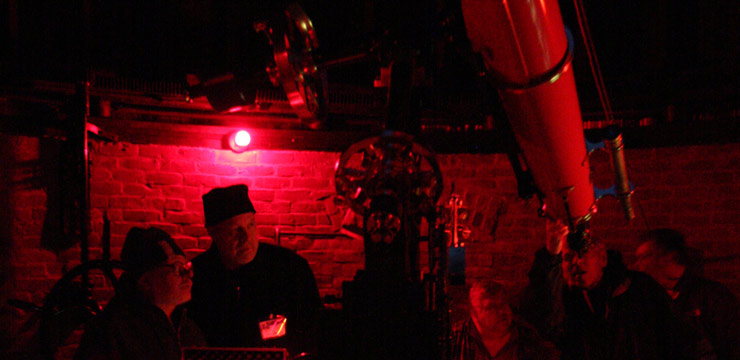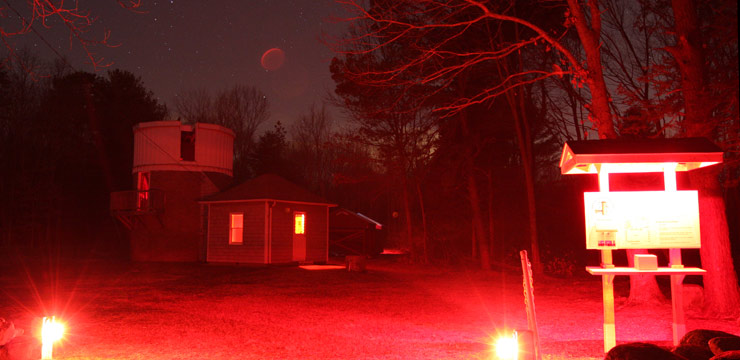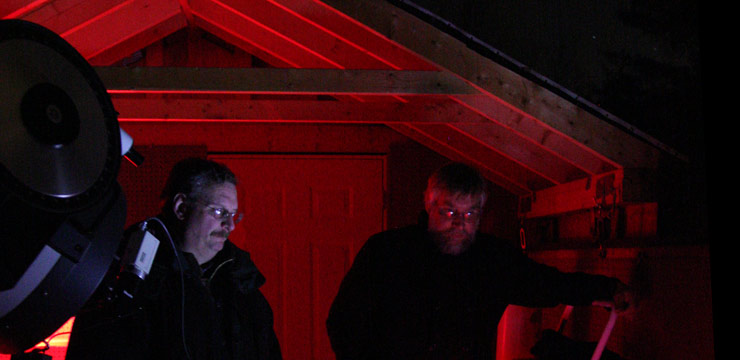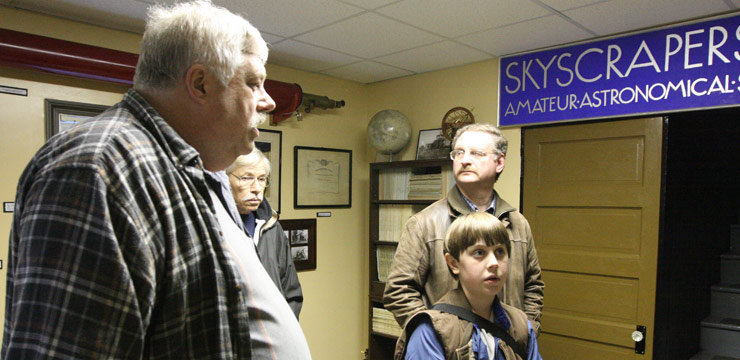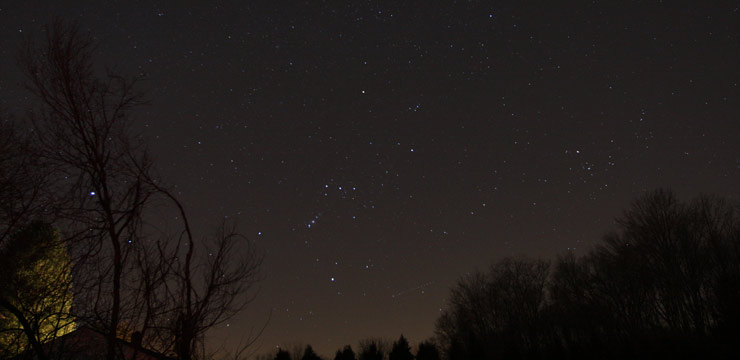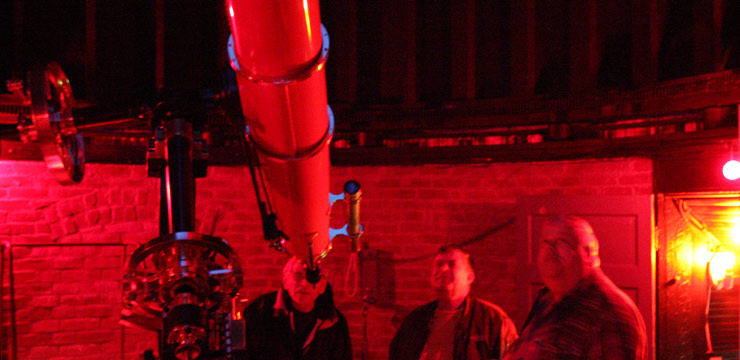
Clark Training Session And Public Open Night
by
The skies were quite cloudy during the day on Saturday, April 2, 2011. Though the forecast called for clearing conditions, we often can’t rely on the weather reports. However, the Trustees believed it would clear and decided to open Seagrave for the evening. Fortunately the clouds melted away at sunset and we only had some high thin stuff that occasionally blocked out a few stars.
That evening I had scheduled a training session on the Clark for some of our members.
Four, including yours truly, had already been certified on the refurbished refractor, including how to use the new weight drive system and governor. Present for the training were John Leonelli, Tom Barbish and Steve Hubbard. Other members (Steve Siok, Jim Brenek, Jim Hendrickson and Bob Horton) showed up for support.
The training began early so we would finish before the public began to arrive. As usual, my young apprentice Alex joined us that evening. The training lasted about an hour. All the clouds disappeared as twilight faded and we soon focused our attention on the Orion Nebula. John acquired it in the Clark. With no moonlight to brighten the sky the wispy tendrils of this nebula of gas and dust (neutral hydrogen and silicates mostly) spanned the field of view in the 25 mm eyepiece, which provided a magnification of 117 times. It was a beautiful sight.
It wasn’t until perhaps 8:45 pm that the public began to arrive. Just before that time I allowed Alex, who has been well –trained on the Clark, to acquire the Orion Nebula on his own. I moved the scope sufficiently across the sky in right ascension and declination so he couldn’t just swing the telescope in one direction to locate the nebula. He had no difficulty getting the nebula in the field of view, despite the fact that the finder is not currently exactly aligned to the main instrument.
Once the guests entered the Clark dome I explained the history of the Clark refractor, Frank Seagrave and Skyscrapers. Everyone got a good look at the Orion Nebula.
Meanwhile, out back at the 16-inch Meade, Steve Hubbard was demonstrating his Mallincam imaging system. The previous night he had given a presentation at the April Skyscrapers monthly meeting about this device. I directed our guests to visit with Steve to see what a fairly inexpensive imaging system can do. I told them to come back before they left to observe Saturn.
I didn’t note what time Saturn cleared the tree-line, but it was most likely around 9:15 pm. Alex was charged with acquiring Saturn. He rotated the dome, moved the observing ladder, and swung the telescope around. After only a little effort he soon captured Saturn in the field of view. I might add that he accomplished this under some pressure—our guests patiently watched and waited as Alex performed this task. Afterwards I was told by a couple of them that they were impressed with Alex.
Saturn’s rings, tilted 10 degrees from the horizontal) were clearly visible, as were 5 of his moons (Titan, Tethys, Dione, Rhea and Enceladus).
Though we had only less than a dozen guests show up for the public night, they, and the members who were in attendance, had a wonderful time.
On the next clear Saturday night take some time out of your busy schedule to enjoy the wonders of the universe through some great telescopes at Seagrave Memorial Observatory.
And with the streetlights now off on Peeptoad Road to save the town money, the local observing conditions are now much darker. We no longer cast shadows on the dome of the observatory!
Please join us soon.



